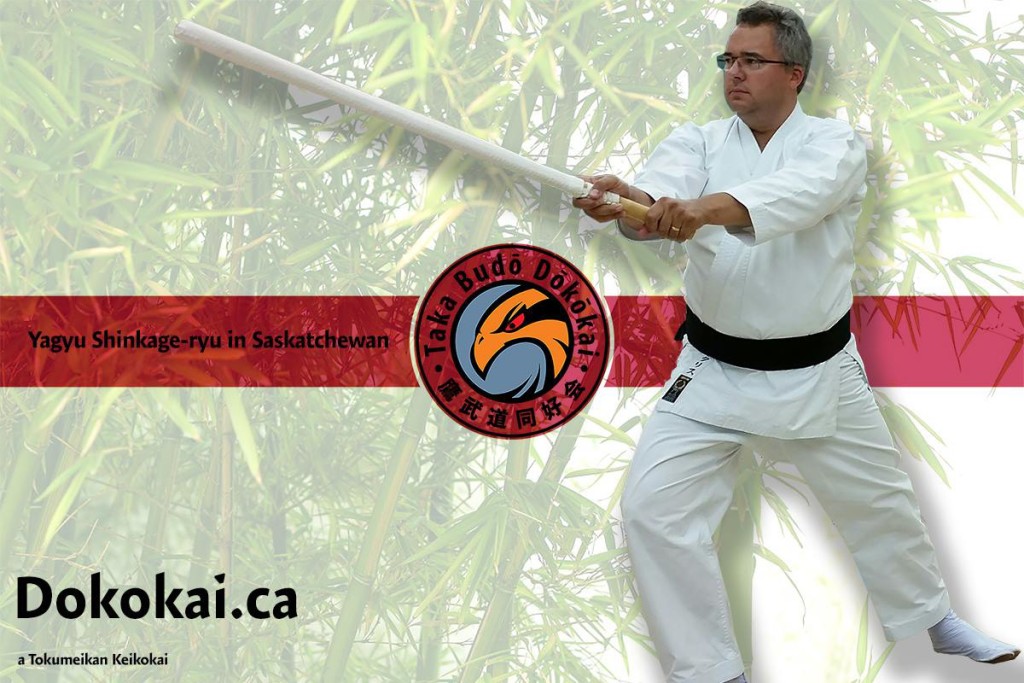Seminar Report:
Saskatchewan Seminar 2016
July 2016
La Ronge, Canada
copyright © 2016 Douglas Tong, all rights reserved.
______________________________________________________

An example of kurai: hidari-gedan
In July of 2016, Tong Sensei travelled to Saskatchewan to conduct private seminars in Yagyu Shinkage Ryu kenjutsu. Below is copied the seminar log of this landmark event courtesy of Taka Budo Dokokai, our official keikokai in Saskatchewan. We have also included our own commentary to support the text and add further details to the story.
To view the original seminar log by Taka Budo Dokokai, go here:
______________________________________________________
Yagyu Shinkage Ryu Seminar Log – July 2016
By Chris De Feijter
July 18, 2016
From July 14 to July 18, Taka Budo Dokokai Martial Arts Inc. organized a private seminar in Yagyu Shinkage-ryu Kenjutsu. Below describes how this seminar evolved.
Thursday, July 14
We travelled from Saskatoon to La Ronge. On the way, we stopped at Little Red Park for our first training session. We looked at Kurai, as well as on posture, hand grip, and feet positioning. Then we drove further North, and stopped at a gravel pit to continue our session. This time, we looked at simple kumitachi.
After this session, we drove further North and stopped at a campsite to continue training. However, the bugs were mightier than the sword, so we escaped and drove straight to La Ronge. After supper, we wanted to try another outdoor session, but also this time the bugs were persistent and buggy.
Tokumeikan: In order to avoid a lost day due to travel, it was decided to examine some of the preliminary details en route to our final destination La Ronge, a small town 4 hours north of Saskatoon. We started off with how to hold the sword in Shinkage Ryu and the basic grip: what each finger is doing, how the hands hold the sword, etc… We moved onto a few basic kurai like chudan and raito. We then looked at the basic cut and the mechanics of it which were very different for our new practitioners who come from an iaido background. We tried gasshi-uchi, the first technique everyone learns. This took some time as our students had to get used to a sword flying at their head full speed. Fighting their fear was the first lesson.
At the gravel pit, we started learning the basic mechanics of the “riding sword” (we call it “reachy-pully”). They had to learn a new way to look at distance and timing and this took time and repetition. So this first day focused on learning basic fundamental concepts and techniques. In the evening, we discussed the “gokai no kurai” from the Sword and the Mind.
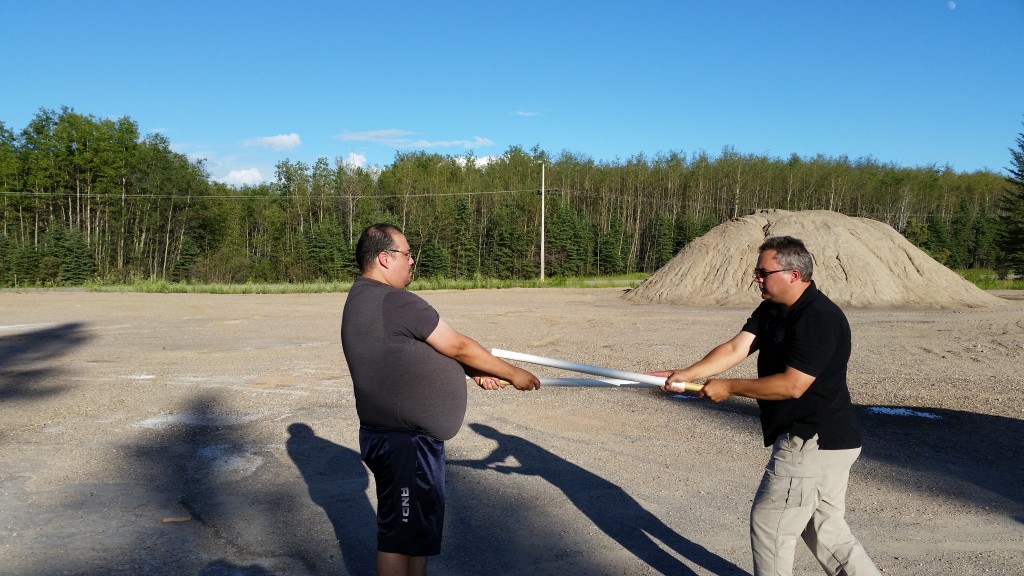
Learning the mechanics of the “reachy-pully” at the gravel pit, north of Prince Albert
Friday, July 15
We studied the Yagyu Shinkage-ryu Rei, and reviewed what was studied the day before. Then we were introduced to the 5 kata of Sangakuen no Tachi, and started to learn foundational skills that would allow us to learn these kata. We continued the day with studying Itto Ryodan and Zantei Settetsu. In the afternoon we started to study Hankai Hanko (eye opener), and continued after supper with Usen Saten.
When we returned home, we had a long philosophy discussion into the middle of the night as we studied key concepts from Yagyu Shinkage-ryu strategy.
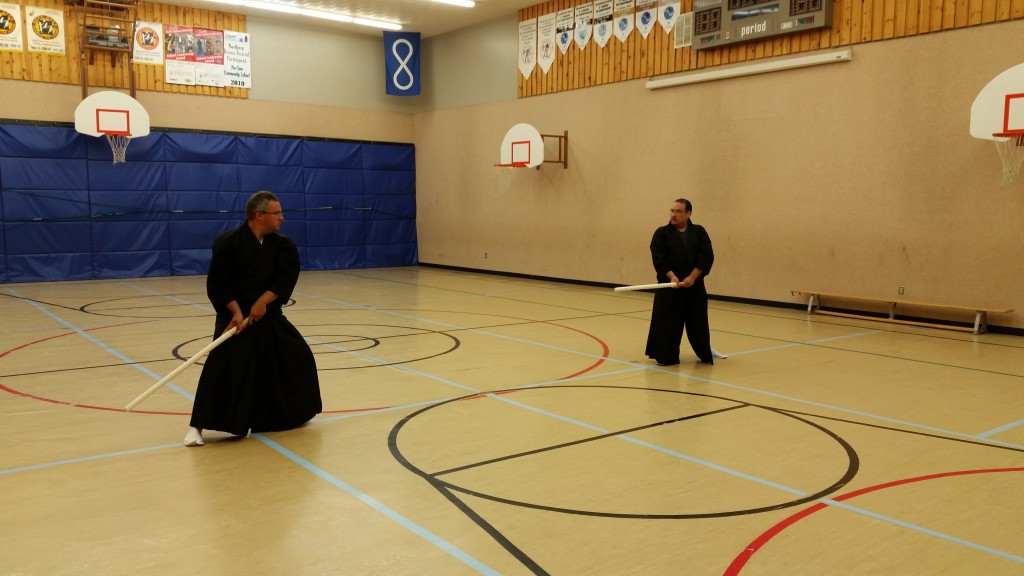
Itto Ryodan
Tokumeikan: All the groundwork of the previous day helped to make a smoother transition on the second day. We started off by learning the etiquette of how to bow-in for class in general and in Shinkage Ryu specifically. Next we went through the routine of how we begin class and the structure of a typical class (what we do first, what we do second, etc…). We reviewed the things we learned the previous day such as the grip, the stances, the cut, and basic techniques like gasshi-uchi.
Then we began to learn kata 1 “Itto Ryodan”. Throughout the rest of the day, we progressively learned katas 1-4 in Sangakuen-no-Tachi (Ue Kara). We also took time out to learn such important things as how to walk in Shinkage Ryu (suri-ashi).
After training, we discussed key passages from the Sword and the Mind that had some relevance to what they had studied during the day.
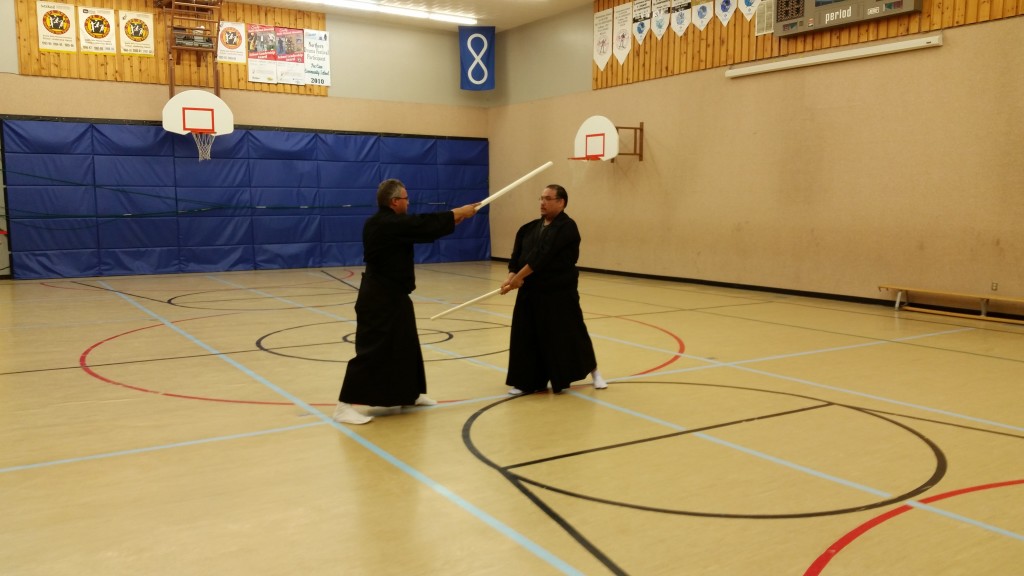
Gasshi-uchi
Saturday, July 16
We trained in regular karategi with traditional obi. We did a review of the four kata, and then studied Chotan Ichimi. After lunch, we continued with foundational skills, and then transitioned to a more dynamic way of performing the 5 kata. At the end of the evening we ended with the dynamic version of Zantei Settetsu, my personal favourite kata which is very representative of what Yagyu Shinkage-ryu stands for.
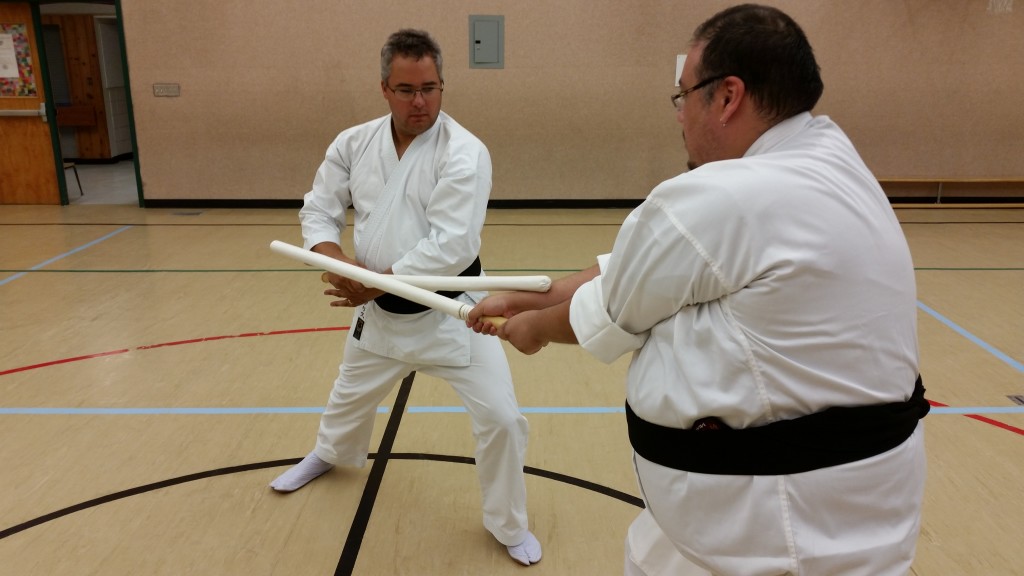
Zantei Settetsu
Tokumeikan: We started Day 3 off with a review of the kata learned so far and progressively adding more kurai to their training routine. Then we learned kata 5 “Chotan Ichimi”. After lunch, we added the fundamentals of how to perform yokomen-uchi and the mechanics of tai-sabaki, moving the body from side to side fluidly like in aikido. Mobility is an important aspect of Shinkage Ryu so it was necessary to spend the time to learn how to move fluidly, quickly, and naturally.
We then moved onto Shita Kara, looking at “Itto Ryodan” and this was a big shock to our participants. No longer was there a lock-step approach to performing the kata but now, the uchi-dachi came at you fast and fluidly without any stoppage. This threw our students off as they were not prepared for or used to the pace of this version of the kata. For our students learning the uchi-dachi side, they also were not used to a sword coming at them with such pace. Now, the previous drills on how to walk, how to move, made complete sense. The day ended with them trying to learn Zantei Settetsu, arguably the most difficult kata to execute cleanly.
In the evening, we talked a lot about the principle of “ken-tai” and the mindset of Shinkage Ryu as they relate to the kata, with many references to passages from the Sword and the Mind.

The Sword and the Mind: a translation of the Heiho Kadensho, which we discussed deep into the night
Sunday, July 17
We reviewed all the techniques, and then continued with the dynamic versions of all the kata. We reviewed all the skills. Sensei then demonstrated the 5 katas as they were originally designed for teaching skills for use in the battle field. We finished with a kata with the kodachi.
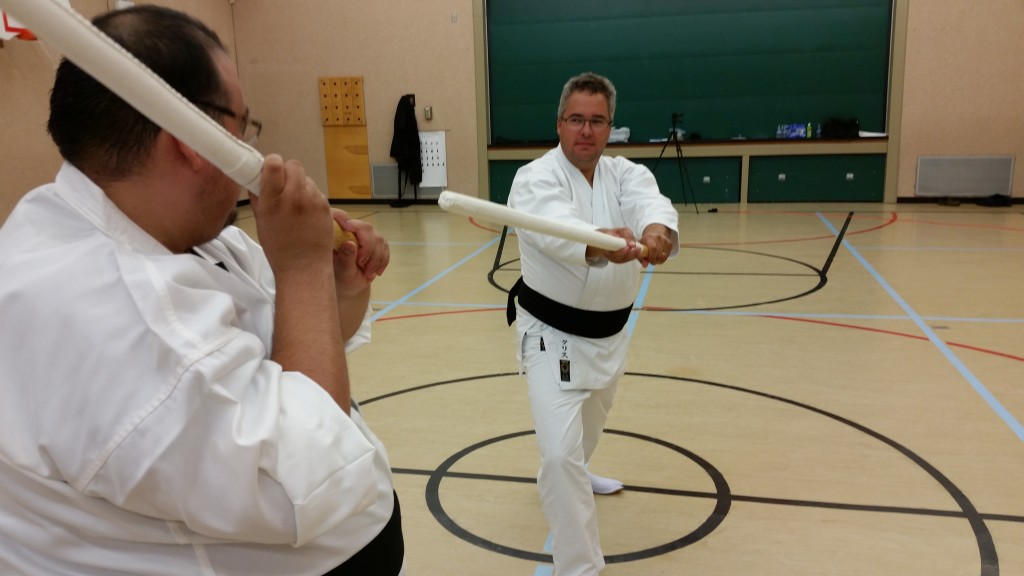
The ending of Hankai Hanko
Tokumeikan: Day 4 began with review of the complete bow-in and opening procedures for class. Having done the same routine for each session over the past day (we had three sessions each day: morning, afternoon, and evening), they were used to the routine now. We added all the remaining kurai and started learning the remaining cuts (to the waist, to the legs). Tying our cutting method with the one they already had learned in iaido with discussions about the difference between cutting and striking, cutting arc, cut trajectories, rationale for tai-sabaki on cuts, etc… was a valuable experience for the students to make sense of the variety of cuts and strikes in Shinkage Ryu and why they do them they way they do them in Shinkage Ryu as opposed to the method used in other schools.
In the morning and afternoon, we learned all the remaining kata (Shita Kara) and they had to do repetitions to drill them into muscle memory. There was a breaking point to all this furious learning. Their cup became full and they discovered that they could not learn any more. This happened at the end of the morning session.
Seeing this, we decided that instead of trying to focus on learning both sides, it would be better to learn one side as the kata were becoming more complex. The shift from the Ue Kara set to the more advanced Shita Kara set represented a shift in complexity and sophistication that the students were not quite ready for. They were overwhelmed. This is completely natural and to try to force it would be counter-productive. Focusing on one side made the learning simpler and achieved better results.
We ended out training with a little look at the principle of Muto-dori (the famous “No-Sword” philosophy of Yagyu Shinkage Ryu) through the encounter of a sword against a kodachi (short sword).
At the end of the day, we felt confident that the goal had been achieved: namely, that an appreciation of the style had been gained, that the fundamental techniques, the character, and the mindset of Shinkage Ryu had been learned, and that the groundwork for future learning had been laid.
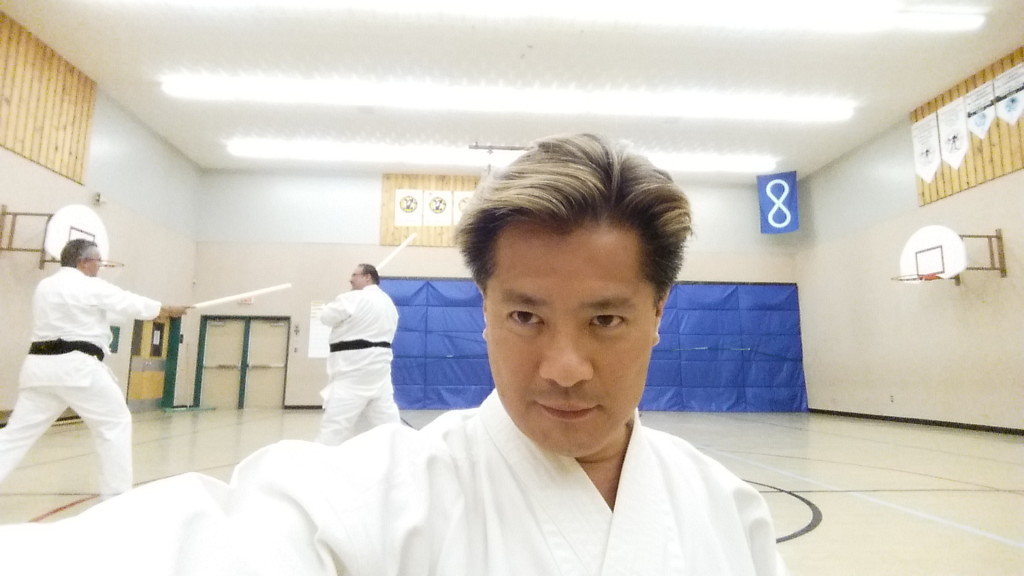
A good day of training
Monday, July 18
This was a travel day, filled with philosophy and shoptalk. Next to techniques, philosophy plays an important part in Yagyu Shinkage-ryu.
Tokumeikan: Yes, in the car on the way back to Saskatoon, we had an excellent opportunity to discuss many things about our organization: our mission, our goals, our structure, our expectations, our training methodology, our approach to training, and many other administrative matters.
Fitness was of paramount concern for us; “fitness” in two important areas:
1) Philosophical fitness. Does the style fit them? Do they fit the style and its philosophy? Yagyu Shinkage Ryu is not for everyone. Not everyone will like it due to its pacifist nature (the “Life-Giving Sword”). It might not fit people’s preconceived notions of how sword-fighting should be. Yagyu Shinkage Ryu is also very much based on a Zen outlook. People looking for a sword style that involves lots of kiai and yelling, that is vigorous and aggressive, with lots of cutting and furious action will not find it here. Likewise, people looking for a style that emphasizes a rigid, indomitable spirit and that values a “strong” response to an opponent’s attack also will be disappointed with Shinkage Ryu which seeks not to win.
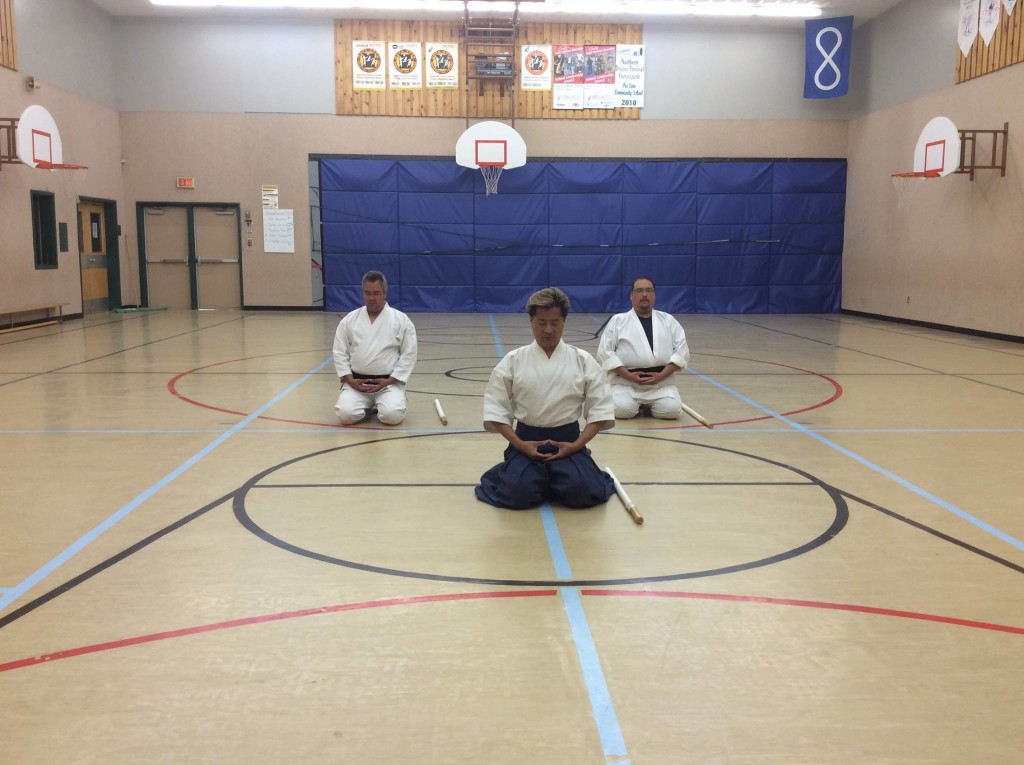
The Zen-based spirit of Yagyu Shinkage Ryu
2) Organizational fitness. Do they fit with our organization and our goals? Do we fit with them? Character is a big issue, especially with us. We are looking for quality individuals with good character. In Shinkage Ryu, ethics plays a major role as the ultimate goal of study in Shinkage Ryu, as Yagyu Munenori says, is to be a better person today than yourself of yesterday, to want to improve yourself, your character. This is very much the spirit of Bushido. Finding that kind of person is important to us.
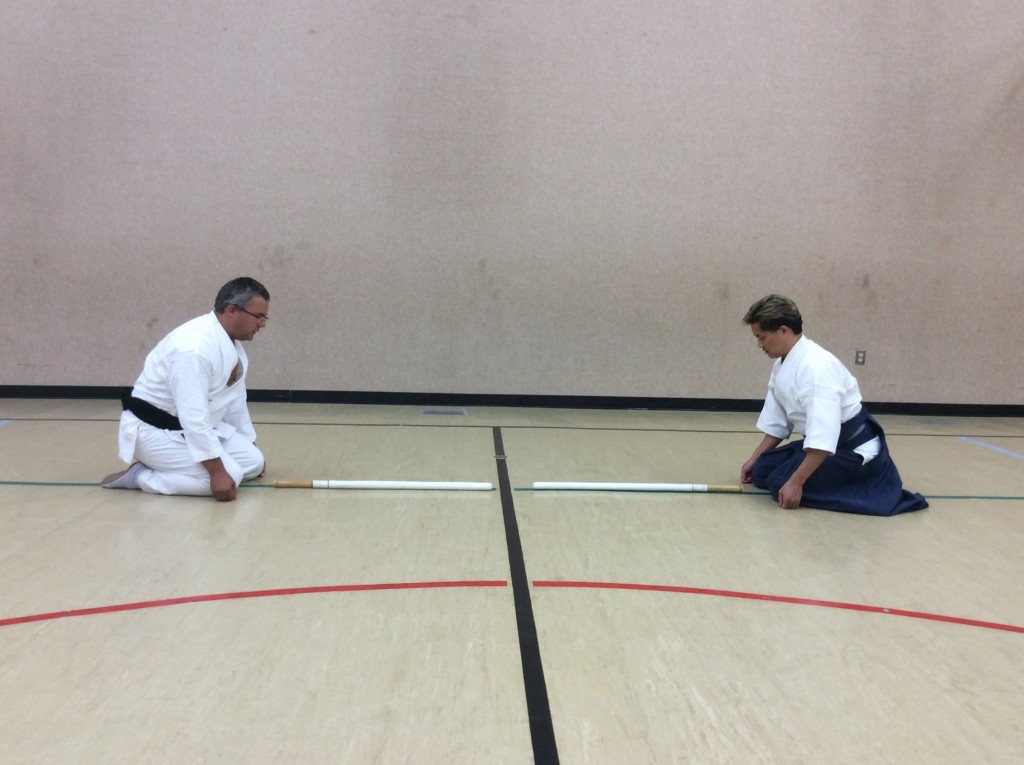
Yagyu Shinkage Ryu and the Life-Giving Sword: a philosophy based on respect
We are happy that the trip turned out to be successful in the sense that we made a good connection with the people at Taka Budo Dokokai, one that hopefully will lead to a good long-term relationship.
______________________________________________________
Here is the testimonial from Chris de Feijter of Taka Budo Dokokai:
“Our school invited Tong-sensei for a 5-day seminar to study the basics of Yagyu Shinkage-ryu. All seminar days were very intense, but Tong-Sensei kept us going and engaged. His approach to leading a seminar is serious with much detail to the level of development of each participant, yet we had many opportunities for a good laugh. After each training day of more than 6 hours, we spent many hours philosophizing about the content in the book “The Sword & the Mind”. This seminar was one of the best seminars organized at our martial arts school. Now I am looking forward to continue the excellent relationship with Tong-sensei as our school continues to study Yagyu Shinkage-ryu as a Keikokai of Tokumeikan.”
Dr. Chris de Feijter
Lead Instructor
Taka Budo Dokokai Martial Arts, Inc.
La Ronge, Saskatchewan
Visit their website:

